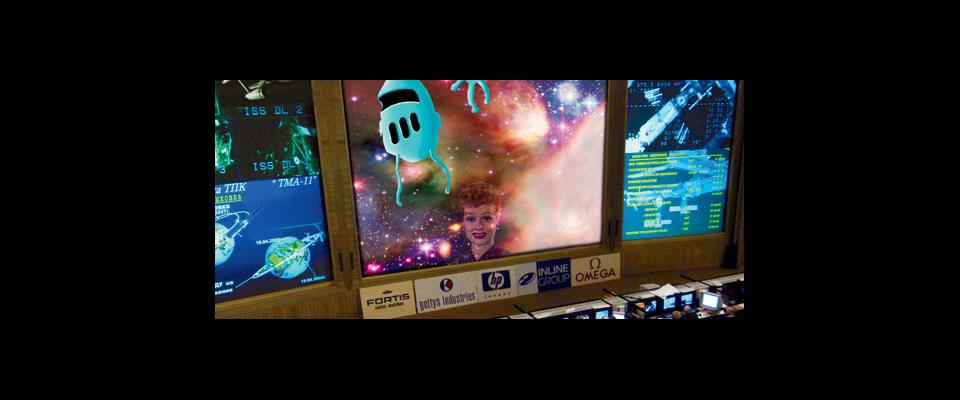The nexus of SETI@home, the world’s most popular volunteer computing project, is tucked away in what might be a broom closet. At the Space Sciences Laboratory in the Berkeley hills, David Anderson opens a set of nondescript doors. Inside, a roaring air conditioner cools three head-high stacks of computer hardware.
The acronym SETI (search for extraterrestrial intelligence) encompasses a wide range of projects, the most famous of which employs a giant radio telescope in Arecibo, Puerto Rico, to scan the firmament for interstellar communications. Dan Werthimer, chief scientist for SETI@home, explains that radio signals produced on Earth can travel thousands of light years. Broadcasts of the original I Love Lucy episode, for example, have reached 10,000 stars to date. If alien civilizations also broadcast with radio waves, says Werthimer, there’s no reason we can’t find them.
But tuning in to those distant signals, if they exist, involves a staggering amount of data crunching. Enter SETI@home, which Anderson invented with Werthimer ten years ago. It enlists personal computers across the world to look for that planetary needle in the galactic haystack.
The equipment in Anderson’s closet stores an impressive 10 terabytes of information (roughly ten times the information contained in all the books in the Library of Congress); it distributes the data and retrieves the results but isn’t able to process it. To handle the data on-site, Anderson says, he would need a closet the size of a football field. But by patching together the unused processing power of PCs, he and Werthimer have created a virtual supercomputer to rival the world’s fastest mainframes. (Over the course of a week spent writing this article, my own computer crunched about 50 hours of SETI data.)
New developments threaten to overwhelm the network, however. The upgraded Arecibo telescope now takes multiple images of the sky simultaneously rather than one snapshot at a time. Add to that a mysterious radio burst from deep space discovered last year in Australia. Scientists think it might have been a pair of colliding neutron stars or a vanishing black hole. To find out, Werthimer wants to use SETI@home to sift through past data for similar bursts. Between that and the extra data from Arecibo, SETI@home may soon have 30 times more information to sort.
Meanwhile, the demand for distributed processing volunteers is growing. To date, 50 projects have adopted BOINC (Berkeley open infrastructure for network computing), the SETI@home software platform, to run everything from climate models to Big Bang simulations. This is both testimony to SETI@home’s success and a threat to its future.
So these days Werthimer is out trying to convince thousands more people to plug in to SETI. “If you’re the lucky one who finds that faint murmur from a distant civilization you get the Nobel Prize,” he says. “The problem is you have to share it with 340,000 other people.”



















